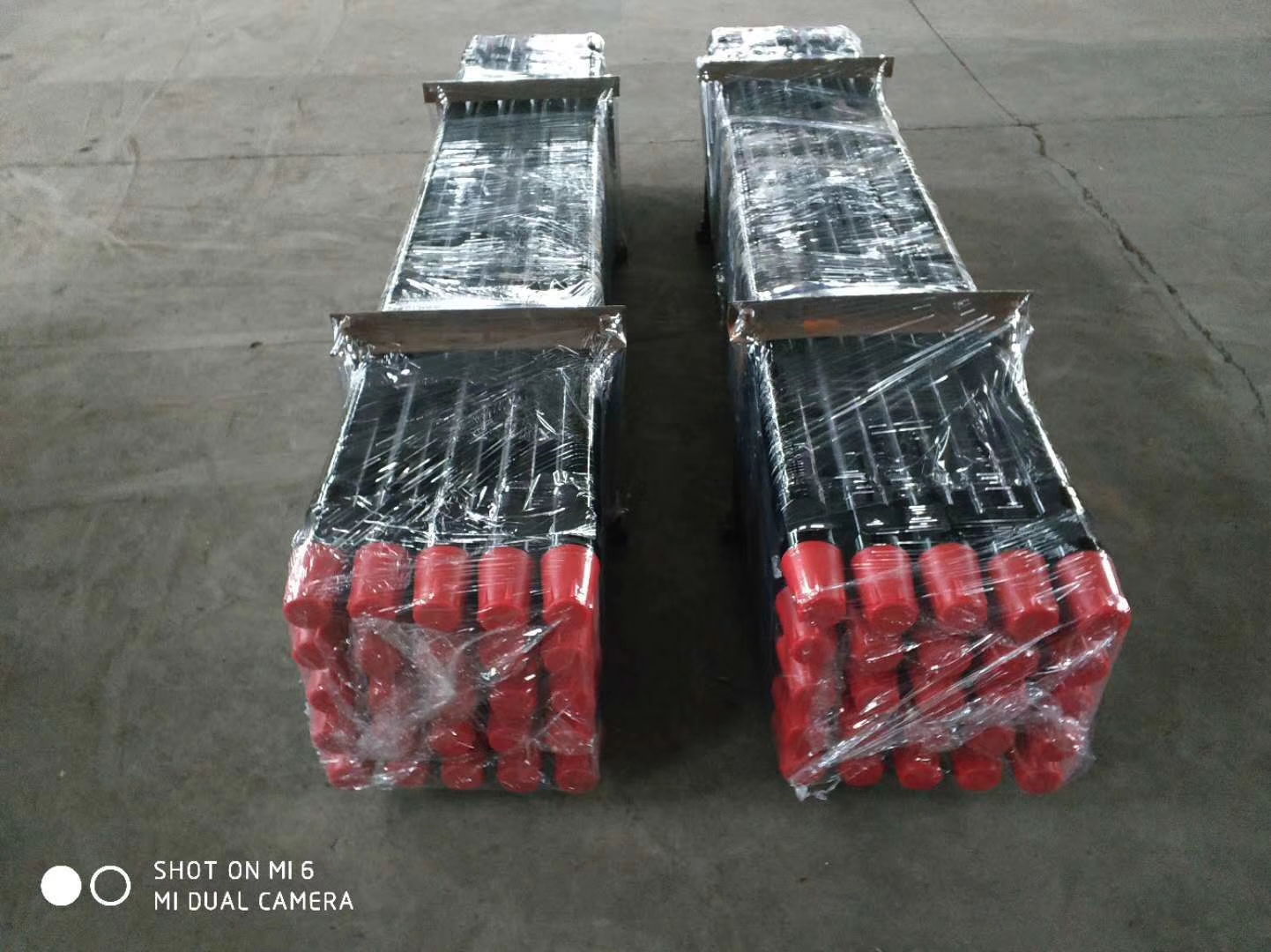27
2025
-
05
Umahluko phakathi kwe-DTH EQHELEKILEYO
Umahluko phakathi kwe-DTH EQHELEKILEYO (ezantsi-Hole) Amanzi e-Drill Rod kunye ne-RIG edityanisiweyo yeRig Rill ngokuyintlokoUyilo lolwakhiwo, indibaniselwano yokusebenza, ukusebenza kakuhle, kunye nemeko yesicelo. Apha ngezantsi kuhlalutyo olupheleleyo lokuthelekisa:
1. Uyilo lolwakhiwo kunye nokudityaniswa okusebenzayo
- I-DTH YODLAD DOS RODS:
-Ibakho auyilo lwemodyuliUkufuna izixhobo ezahlukeneyo ezinjengemithambo yomoya kunye neenkqubo zamandla.
- Umzekelo: Imimandla ye-DTH ye-RORGS ixhomekeke kunyanzeliso lomoya lwangaphandle ukubonelela ngomoya ocinezelweyo, kunye nolawulo olwahlukileyo lokuphucula i-rographion kunye nokujikeleza, kukhokelela kwiseti eqhekekileyo.
- Iirod ezihlanganisiweyo ze-Drill:
-AmkeleUyilo oluhlanganisiweyo kakhuluOko kudibanisa i-rig, i-air compressor, inkqubo yamandla, kunye neeyunithi zokususa uthuli kumatshini omnye.
-Umzekelo: Umzekelo: Iirigs ezihlanganisiweyo ezinjenge-Suny Swerlid Sweest okanye i-chongqy jenke's jk650 ye-chanke's JK650-2 yokuSebenza ngokuSebenza ngokuSebenza ngokuSebenza ngokuSebenzayo kunye nokunciphisa ixesha lokuseta.
2. Ukusebenza ngokuphumelelayo kunye nomhlobo-wobuhlobo
- I-DTH YODLAD DOS RODS:
-Ukuhlala rhoqo kwe-processores yomoya yangaphandle kunye nokuqhagamshela kwendlela ukunyuka kwexesha lokuphumla.
-Umde oqingqiweyo (E.G., imigangatho emi-3 yeemitha ezintathu) inyanzelisa utshintsho lwe-rod oqhelekileyo, ukuphakamisa iindleko ze-DOFE (njengoko kuphawulwe kwi "Webpage 1").
- Iirod ezihlanganisiweyo ze-Drill:
-Ukuphuculwa ngokufanelekileyo ngokuzenzekelayo kunye neentonga ezinde. Umzekelo:
-I-Sany Swed152B isebenzisa ii-6-rods ezi-6; Iintonga ezi-3 kuphela ziyafuneka ukuze zidlule umngxunya we-16,5 eemitha, ukunciphisa utshintsho.
-I-hydraulic uthuli
- I-Chongqy JK650-2050-2 Inceda ulawulo lomsebenzi omnye, ukusika abasebenzi nge-50%.
3. Ukusetyenziswa kwamandla kunye nokusebenza ngendleko
- I-DTH YODLAD DOS RODS:
-Ilahleko yamandla aphezulu ngenxa yezinto ezahlukileyo (E.G., i-Air Trancessor-to-Rig).
-Umdabi we-ofisi yepetroli ngaphandle kokufumana uxinzelelo olunexabiso eliphantsi ("kwiwebhusayithi ye-1"). Iirod ezihlanganisiweyo ze-Drill: Ukonga amandla ngeenkqubo eziphambili (E.G., China IV-IV-I-IV-Compant Air Compressors).
4. Iimpawu zendalo kunye ne-smart
- I-DTH YODLAD DOS RODS:
- Ulawulo lothuli luxhomekeke kwiinkqubo zangaphandle ezinokukhetha (i.G., iifiltha ezisekwe emanzini), ukuhambisa ungcoliseko olungazinzanga.
- Iirod ezihlanganisiweyo ze-Drill:
-Umgangatho ophakathi wokususwa okuphezulu
-Iitekhnoloji ye-smart njenge-teck-telling drive kunye nokubeka iliso kude ukunciphisa umngcipheko kwaye zenze ukuba kubekho umdlalo wedatha yexesha lokwenyani.
5. Imeko yesicelo
- I-DTH YODLAD DOS RODS:
-Ilungele iiprojekthi ezincinci eziphakathi ezine-geology elula (i.G., imisweli esemgangathweni, i-Wells yamanzi) kodwa isokola imizabalalo entsokothileyo (iindawo ezinzima).
- Iirod ezihlanganisiweyo ze-Drill:
-Ayilwe imigodi enohlaza enkulu kunye neenkungu ezinzima. Umzekelo:
- I-Sany BF Sering isawula zombini itye elithambileyo nelukhuni ngeendlela ezimbini zokuntywila.
- Chongqy Jinke JK650-2 I-Tort-Manch-Sunch ye-Tort Gebles kwiimeko zejografi.
Isishwankathelo Ukusuka kwi-Globorex
Umahluko ophambili we-stem ukusukaInqanaba lokudibanisakwayeUbugcisa betekhnoloji. Iirigs ezihlanganisiweyo zigqwesileyo, uzinzo, kunye nokuziqhelanisa neemfuno zobunjineli zale mihla (E.G., imigodi eluhlaza), ngelixa iirod eziqhelekileyo zihlala zisebenza ngeendleko ezincinci, zohlahlo-lwabiwo mali. Ukukhetha kufuneka kubekwe phambili izinto ezithile zeprojekthi ezinje ngoBhaliso, imigangatho yokusingqongileyo, kunye nobunzima bejografi.

Iindaba ezinxulumene noko
Zhuzhou Zhongge Cemented Carbide Co., Ltd.
YongezaNo. 1099, i Pearl River North Road, Tianyuan District, Zhuzhou, Hunan
Thumela i-imeyile
Ilungelo lokushicilela :Zhuzhou Zhongge Cemented Carbide Co., Ltd. Sitemap XML Privacy policy














